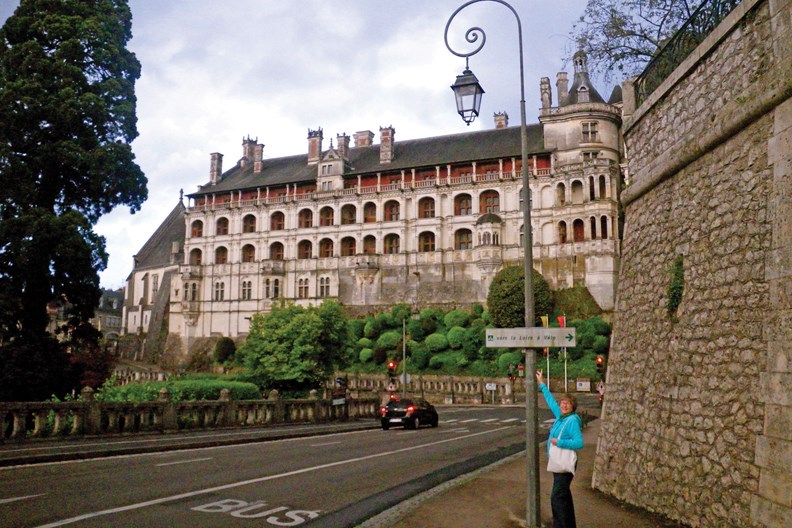Our Loire Valley explorations begin in Blois, an historic town south of Paris.
Arriving by fast train, our lessons start a short walk from the railway station.
“This family-run hotel was named for Anne de Bretagne, Duchess of Brittany and wealthiest woman of her day,” the receptionist winks. “And twice marrying kings, she lived up on that hill.”
A leisurely stroll later, we stand in a large square fronting Chateau de Bois, a World Heritage spectacle.
Leaving only two towers, Louis XII’s 1498 gothic brick and stone chateau replaced the original 9th century fortress. The king’s equestrian sculpture poses above the entrance.
Inside, Louis’ crowned porcupine emblems embellish doorways, fireplaces and stained glass windows. Queen Anne’s initial A is prominently embossed alongside his L. And housing Musée des Beaux-Arts since 1869, their sumptuous royal apartments exhibit artworks from the 16th to 19th centuries. Porcelains, jewelry, sculptures and masterpieces by Ingres, Boucher and Rubens are on display. One painting shows medieval Blois; in another, the Archbishop of Reims blesses Joan of Arc.
Across the courtyard, François I built his own imposing addition 15 years later.
The marble staircase-tower and gargoyle down spouts stand out. Interior spiral stairs feature his salamander symbol. And in the Great Hall, we discover the surprisingly simple throne used by seven French kings and ten queens. Other chambers’ luxurious wall coverings, velvet draperies, decorative floors and magnificent tapestries provide glimpses into lavish lifestyles.
Catherine de Medici’s chamber of secrets fascinates. François’ infamous daughter-in-law was known for interference in state matters and the inexplicable deaths of enemies. Historians suggest this notorious queen bedazzled guests with priceless art pieces kept in hundreds of little cabinets filling her private room. The embellished wooden repositories prompt speculation. Were deadly potions kept hidden in these ornate cabinets instead?
After dark, a spectacular lightshow back at the castle transports us through five turbulent centuries. Gigantic images are projected onto palace fronts as audio-guides recount tales of pomp, power and trickery. Among captivating highlights, Joan of Arc’s army rides from this castle, heading for Orleans with banners flying. A blue blanket dotted with golden fleur de lis cloaks surrounding façades as Holy Roman Emperor Maximillian arrives to sign the Treaty of Blois, containing an unworkable marriage contract with Anne de Bretagne’s daughter. And Henry III’s brutal assassination of rival Duc de Guise is graphically portrayed.
Outside across the square stands a sculpture of Jean Eugène Robert-Houdin, the world-renowned magician born in Blois. Behind is five-storey Maison de la Magie guarded by a six-headed dragon. This temple of magic recounts magic’s history and Houdin’s considerable contributions. In the theatre, a couple performs a tale filled with wondrous illusions.
Brass icons mark walking routes throughout old town. From the museum, steep staircases and winding cobblestone streets lead us between half-timbered houses recalling past grandeur. At Saint Nicolas, a popular church established in 1138, we admire majestic pillars, stained glass windows, early frescos and statuary. Our explorations end at one of several archaic wells.
Another route skirts gothic-styled St. Louis Cathedral. Inside are contemporary stained-glass windows and ancient crypt from the site’s original 10th century church. Farther on, the House of Acrobats still displays carvings of nimble acrobats, jugglers and entertainers from medieval farces. On the hillock ahead, a former Bishop’s Palace – now the Town Hall – stands on even earlier indoor courts for jeu de paume, forerunner to tennis. Rose gardens and larger than life Joan of Arc sculpture adorn an adjacent 17th century terrace. From there, we delight in pastel cityscapes punctuated by lofty steeples and a stone bridge spanning the river Loire below.
Our three days of exploration around Blois kick off a memorable holiday.



